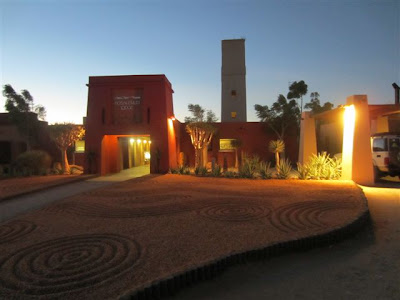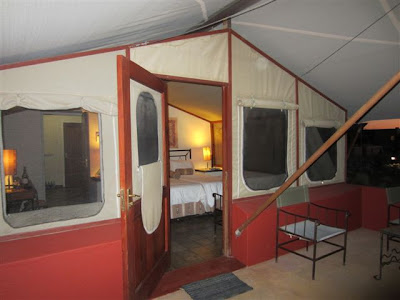It's not really called Crocodile Creek; it's called the Dickson Inlet, and it's a mangrove lined tidal estuary that's upstream from the Port Douglas marina. It does have crocodiles, though. We took a sunset cruise up Dickson Inlet on our last evening in Port Douglas.
When cyclones are approaching, people take their boats inland, up the inlet, to protect them from the storms. Not always successfully, as the boat below shows! This yacht couldn't be salvaged after a cyclone, as the salvors couldn't board the boat -- because a large crocodile had taken up residence nearby. So the yacht was never salvaged and here it lies today. Crocs 1, salvors 0.
Our first croc sighting was this large male. Can you see it in the middle of the photo, close to the bank, just under the water?
A bit further up the river, we saw another crocodile: this time a female crocodile who most obligingly walked out of the water, turned around on the bank like a reptilian ballerina, and then disappeared back into the water. Perfect timing for us, but quicker than you think, so photos were a bit difficult. These are taken on zoom and with the movement of the boat, focus was a bit challenging.
We saw fish eagles and kites, both of which responded to salmon heads offered by the tour guide. (Apparently the fish eagle scorns all offerings other than salmon.)
And back into Port Douglas marina, just a couple of hundred metres away from the crocs.





























































